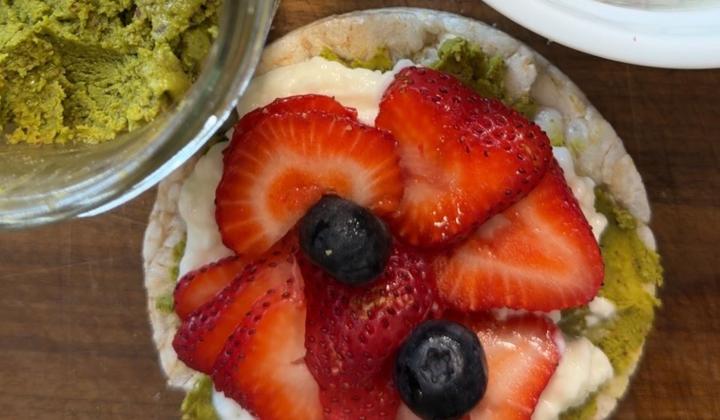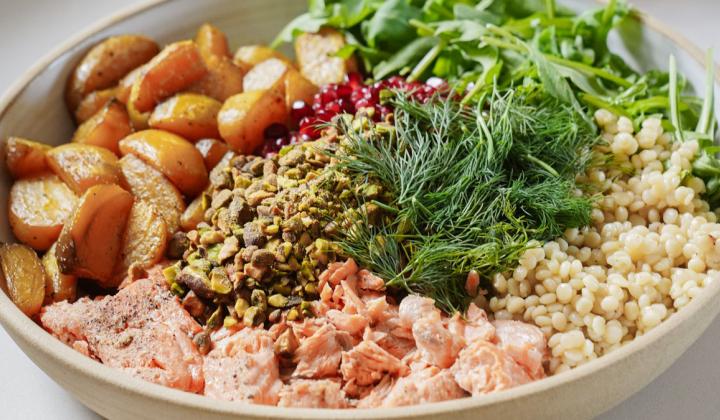Three King Cake with American Pistachio

Yield
Ingredients
|
Starter |
g/ml |
lbs./oz |
Baker's % |
Yield % |
Notes |
|
Flour, pastry |
5000 |
11 lbs |
100.00 % |
57.14 % |
|
|
Milk |
3000 |
6 lbs 13 oz |
60.00 % |
34.29 % |
|
|
Yeast, compressed |
750 |
1 lb 11 oz |
15.00 % |
8.57 % |
|
|
Total |
8750 g |
19 lbs 8 oz |
175.00% |
100.00% |
|
Dough |
g/ml |
lbs./oz |
Baker's % |
Yield % |
Notes |
|
Starter |
8750 g |
19 lbs 5 oz |
63.64 % |
37.68 % |
(from above) |
|
Flour, bread |
5000 g |
11 lbs |
36.36 % |
21.53 % |
|
|
Sugar, granulated |
800 g |
1 lb 12 oz |
5.82 % |
3.45 % |
|
|
Butter, unsalted |
1750 g |
3 lbs 14 oz |
12.73 % |
7.54 % |
|
|
Almond, paste |
750 g |
1 lbs 11 oz |
5.45 % |
3.23 % |
|
|
Eggs, whole |
500 g |
1 lb 2 oz |
3.64 % |
2.15 % |
|
|
Dough conditioner |
200 g |
7 oz |
1.45 % |
0.86 % |
|
|
Eggs, yolks |
180 g |
7 oz |
1.31 % |
0.78 % |
|
|
Salt, table |
150 g |
5 oz |
1.09 % |
0.65 % |
|
|
Lemon, essence |
40 g |
1 oz |
0.29 % |
0.17 % |
|
|
Milk, whole |
1500 g |
3 lbs 7 oz |
10.91 % |
6.46 % |
|
|
Currants, black |
1500 g |
3 lbs 5 oz |
10.91 % |
6.46 % |
|
|
American Pistachios |
2100 g |
4 lbs 10 oz |
15.27 % |
9.04 % |
Roasted, whole |
|
Total |
23220g |
51 lbs 6 oz |
168.87 % |
100.00 % |
Instructions
This formula begins with a pre-fermented dough (pate fermentee). To prepare the pre-fermented dough, dissolve the yeast in the milk 27ºC (80ºF) and add the pastry flour. Depending on the mixer you use, adjust the mixing time and speed to obtain a good blend of the ingredients, without much development of the gluten. After mixing transfer the dough into a plastic holding tub, cover the dough to prevent it from drying out and ferment at room temperature for 30 minutes.
Return the pre-fermented dough to the mixer and add all the remaining ingredients except for the currants and American Pistachios, to prepare the final dough. Mix with a dough hook for 3 min. on 1st gear. Stop the mixer, scrape down the side of the bowl and continue mixing for 7 more minutes in third gear. Stop the mixer and return to first gear, add the conditioned currants and American Pistachios and mix until they are incorporated but not broken. Place the dough on a slightly floured workbench and bench rest for 50 minutes.
Using a balance scale, scale for each Königskuchen, six 56 g (2 oz) portions, and one 112 g (4 oz) portion. Slightly round all the pieces into smooth balls. Place a coffee bean in the middle of the 4 oz. pieces. While you are working with the dough keep it covered with a plastic bag so it will not dry out. Arrange the dough pieces on the sheet pans, the larger portion in the middle and the six smaller portions around the outside.
Brush the assembled cakes with the egg wash and put them in the proof box for about 25 min. When the cakes are about ¾ proofed, remove them from the proof box and brush a second coat of egg-wash onto the dough. Take the garnish and decorate the biggest middle piece of dough with rock sugar and the outside pieces with flaked bleached almonds. Place the sheet pans in a 210ºC (410º F) preheated oven and immediately give 1 second steam. Drop the oven temperature to 170ºC (338ºF) and bake for about 20-25 minutes until golden brown. Oven temperature and baking time will vary. Take the cakes out of the oven and immediately cool on a cooling rack, until the cake reaches an internal temperature of about 35ºC (95ºF) before wrapping or slicing.
If the specialty crowns are not available from your local food supplier you can improvise with gold foil and scissors. Take a long piece of foil, start at the edge and fold 2” down and keep repeating till you get to the end. Tuck one end of the foil inside the other to make a circle, big enough to fit on the inner, larger circle. Using a pair of scissors, cut upside down triangles on one side of the circle. Spread the points of the crown a little to give them a shadowing look. Place the crown on top of the cake.
Notes
Currants must be properly conditioned to increase their moisture contest, before addition to the dough, thus minimizing the moisture absorption from the dough.
In European countries, the coming of the three wise men bearing gifts to the Christ child is celebrated twelve days after Christmas (January 6th). This celebration called “Epiphany”, “Little Christmas,” or the “Twelfth Night” is a time of exchanging gifts and feasting. All over the world people gather for festive celebrations. One of the most popular customs is still the baking of a special cake in honor of the three kings, "The three Kings Cake."
On Three Kings Eve children put out straw, food and water for the royal animals and leave their shoes by the door to be filled with presents by the three kings. This tradition is based upon the three kings who brought the gifts to baby Jesus. This is the same as Epiphany that is celebrated in many churches around the world.
Europeans hide a bean inside their cake and the person receiving the bean must portray one of the three kings. Latin American people put a small figure inside the cake representing the Christ child. It is said that a year of good fortune awaits the lucky person who discovers the figure. Every part of the world that celebrates this holiday expresses their traditions differently. Even though this special day is only celebrated ounce a year, the Three Kings Cake is enjoyed any day of the year. The sweet, yet settled taste makes it ideal for any occasion.
This special cake is a welcome addition to any bakery selection and a great business boost for the slower month of January. The appearance of the cake is eye catching and the customer will appreciate this new variety.

American Pistachio Growers











